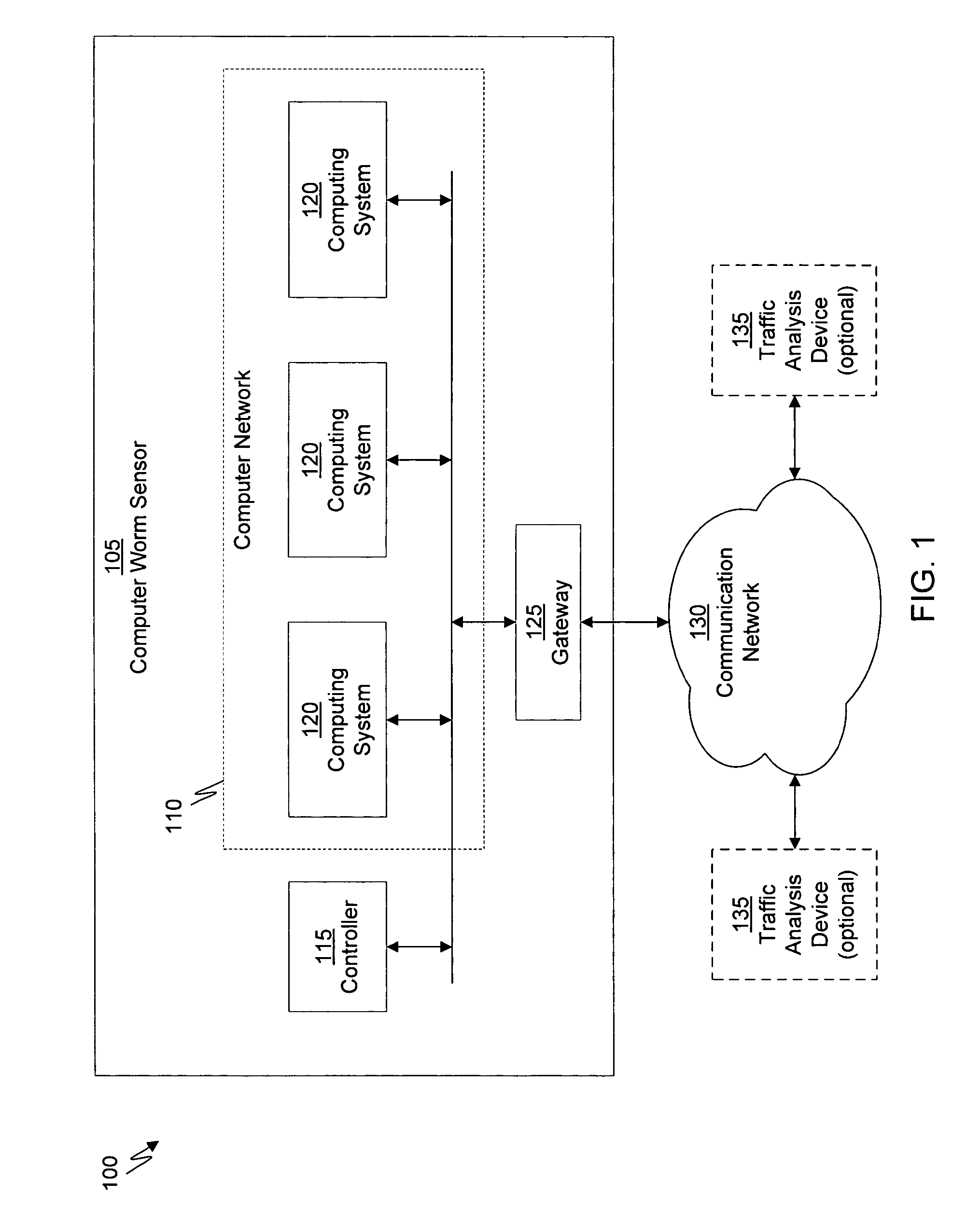System and method of detecting time-delayed malicious traffic
a malicious traffic and time-delayed technology, applied in the field of computer systems, can solve the problems of increasing complexity and sophistication of modern computer worms, difficult to detect computer worms, and difficult to distinguish between ordinary communications traffic and computer worms
- Summary
- Abstract
- Description
- Claims
- Application Information
AI Technical Summary
Benefits of technology
Problems solved by technology
Method used
Image
Examples
Embodiment Construction
[0023]A computer worm detection system in accordance with one embodiment of the present invention orchestrates network activities in a computer network and monitors the behavior of the computer network. The computer worm detection system detects a computer worm in the computer network based on the monitored behavior of the computer network. Additionally, the computer worm detection system determines an identifier, such as a signature or a vector, for detecting the computer worm. The computer worm detection system can generate a recovery script to disable the computer worm and repair damage caused by the computer worm.
[0024]FIG. 1 depicts an exemplary computing environment 100 in which a computer worm sensor 105 can be implemented, in accordance with one embodiment of the present invention. In various embodiments, the computer worm sensor 105 functions as a computer worm detection system, as is described more fully herein. The computer worm sensor 105 includes a controller 115, a com...
PUM
 Login to View More
Login to View More Abstract
Description
Claims
Application Information
 Login to View More
Login to View More - R&D
- Intellectual Property
- Life Sciences
- Materials
- Tech Scout
- Unparalleled Data Quality
- Higher Quality Content
- 60% Fewer Hallucinations
Browse by: Latest US Patents, China's latest patents, Technical Efficacy Thesaurus, Application Domain, Technology Topic, Popular Technical Reports.
© 2025 PatSnap. All rights reserved.Legal|Privacy policy|Modern Slavery Act Transparency Statement|Sitemap|About US| Contact US: help@patsnap.com



